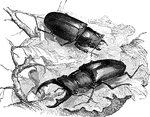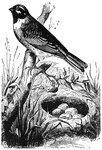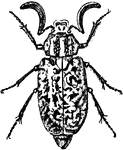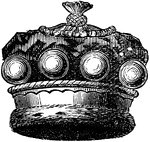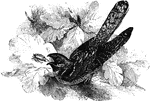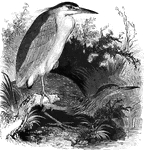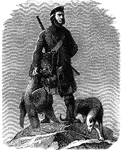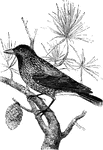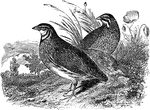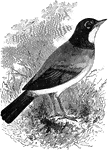Clipart tagged: ‘european’

Birds
An illustration of two birds. On the left side is a European wood pigeon and on the right is a stock-dove.
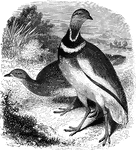
Little European Bustard
The little European bustard measures about seventeen inches in length, and is found predominently in…

Common European crane
The common crane of Europe is mostly of a blueish-ash color, feeding on worms, insects, reptiles, mollusca,…

Cuttlefish
"Twelve to eighteen inches long; the skin smooth, whitish, and spotted with brown and purple." —…

Bone of the cuttle-fish
"An internal support of a calcareous nature, and formed in laminae; this is the well-known cuttlefish…
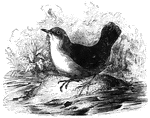
Black Dipper
The black dipper, also known as the European water-ousel, feeds on small shellfish and insects.
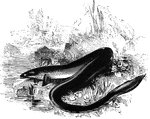
Common European Eel
"These have an elongated form, and a soft, thick, slimy skin; the scales are very minute, and imbedded…

Glaux Maritima
Also known as Sea Milkwort, Glaux Maritima is a hardy perennial seashore plant belonging to the order…
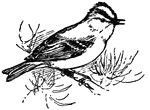
Golden-Crested Wren
Also known as the Kinglet, the Golden-Crested Wren (Regulus cristatus) is the smallest of European birds.…

Greek
"The Greeks belong to the great Indo-European race, who from the earliest times have been the conquerers…
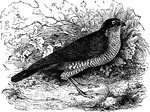
European Sparrowhawk
Resembles the American sparrow-hawk, feeding primarily on small birds and quadrupeds, as well as domesticated…
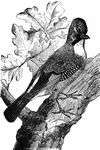
European Jay
The European jay is common through Europe, feeding on vegetables and fruits, as well as on insects and…

Pagan Lamp in the Shape of a Foot
"A pagan votive lamp of bronze, now in the museum at Naples." -Bodmer, 1917

European lamprey
"The color is yellowish marked with brown. Like the sharks and rays is it without an air bladder; to…

Lute
"The European lute is derived in form and name from the Arabic "el ud," "the wood," the consonant of…
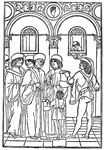
Fasciculus Medicinae
This is an illustration of Fasciculus Medicinae by artist Ketham during the 15th century. It is a collection…

Common European Nuthatch
A small, omnivorous bird, which gets its name from the hatches or hammerings it leaves on nuts.
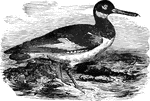
European Oystercatcher
The European oyster-catcher is about eighteen inches in length, commonly found along the sea-coast.…

European Pike
"It is strong, fierce, and active, swims rapidly, and occasionally darts along with the swiftness of…

Common European Water Rail
The common European water-rail is native to warmer parts of Europe, as well as portions of Asia.

Common European sea-star
"The colors in this are variable but brilliant - red, purple, green, and white. It measures from nine…
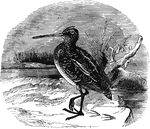
European Snipe
Ranging as far north as Scandanavia, Iceland, and Greenland in the summer, the European snipe migrates…

Stackys sylvatica
"The European hedge woundwort, a tall hairy plant, with heart-shaped leaves, and numerous whorls of…

Stag Beetle
"The largest European species of beetle an adult male sometimes reaching an length of over two inches,…
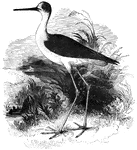
Black-Winged Stilt
Also known as the European stilt, the black-winged stilt inhabits coastal areas where it forages for…

Common European Swallow
The common European swallow, which averages approximately six inches in length. This migratory bird…
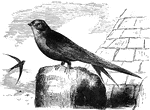
Common European Swift
This swift prefers to build its nest under the eaves of houses, in holes around steeples, in old towers,…

Common European toad
"It is a harmless animal, though its ungainly appearance has made it the subject of general aversion."…
Berberis Vulgaris
A shrub that is native to Europe, northwest Africa, and western Asia. It reaches up to 13 feet in height,…

Water Scorpion
"The Nepa cinerea is a European example of this family, which may be met with there in every…
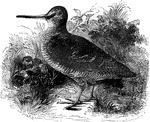
European Woodcock
The European woodcock averages about thirteen inches in length, and prefers to feed on earthworms. It…
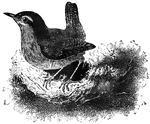
Common European Wren
Common throughout Europe, the European wren frequents hedges, gardens and bush places. They feed primarily…
